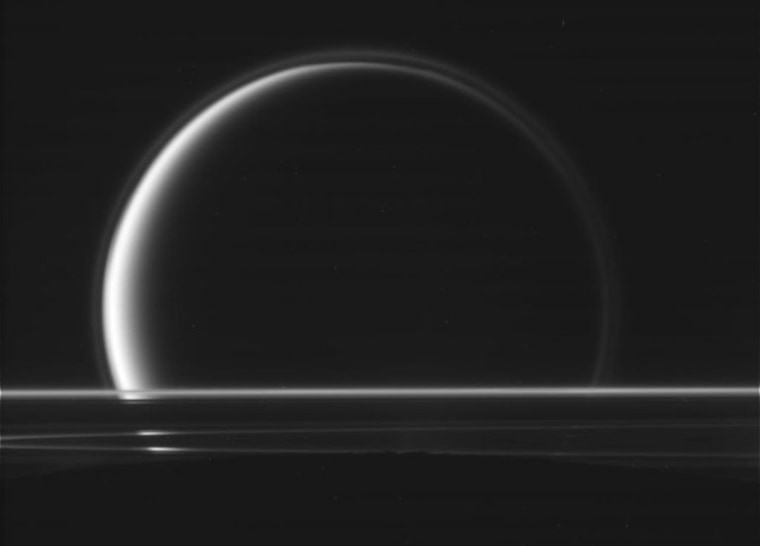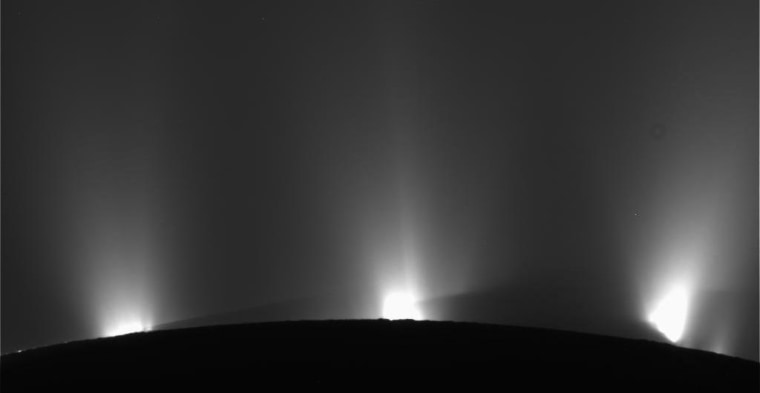NASA's Cassini spacecraft is whipping through a double-header at Saturn to catch an up-close glimpse of two of the ringed planet's moons — the icy Enceladus and the cloud-covered Titan.
The fortuitous alignment of the two Saturn moons means that the Cassini probe is able to observe these contrasting worlds within less than 48 hours, with no maneuver in between.
Cassini swooped past Enceladus on Monday, zooming within about 270 miles (430 kilometers) of the moon's surface.
The main goal of the Enceladus flyby was to watch the sun behind the moon's water-rich plume that flares out from its south polar region.
Scientists used Cassini's ultraviolet imaging spectrograph to measure whether there is molecular nitrogen in the plume, which is already known to contain ammonia. Heat can allow ammonia molecules to break into nitrogen molecules, and scientists want to know if that's happening at Enceladus.
By determining the nitrogen content of Enceladus' geyser plume, scientists could unearth clues about thermal processing in the interior of the icy moon.
Cassini's second flyby took it past Saturn's largest moon, Titan.
The closest approach was to take place late Wednesday, with Cassini coming within 870 miles (1,400 kilometers) of the moon's surface.
Cassini was programmed to perform radio science experiments during the Titan flyby. Such experiments were aimed at detecting the subtle variations in the gravitational tug on the spacecraft by the giant moon, which is 25 percent larger in volume than the planet Mercury.

Scientists will analyze the data to get a clearer understanding of Titan's internal structure, and to learn whether the moon has a liquid ocean beneath its surface. The composite infrared spectrometer will also use its southernmost pass to collect thermal data to fill out its temperature map of the smoggy moon.
Cassini has made four previous double flybys, with one more planned for the years ahead.
The Cassini probe launched in 1997 and arrived at Saturn in 2004, where it dropped the European Huygens probe on the cloudy surface of Titan.
Cassini was slated to be decommissioned in September of this year, but has received an extended mission that now runs through 2017.
